In recent years China is setting a new standard in every industrial sector that works as a foundation for the country’s economy. The strides China has accomplished in the RCN year in economic growth are astounding.
Making new investments and creating new visions for the future is noteworthy in global economic expansion. The child holds the title of the second largest country in land area, with significant economic power on the world’s stage; it is also known to produce various goods for import and export.
Page Contents
Top 5 Biggest Ports in China
The shipping industry of China is powerful and efficient. The coastline of China covers numerous harbors and small ports that deal with constant trade, fishing, goods, minerals, ores, automobiles, and agricultural goods.
This article will guide you through all the major ports in China; since there are a lot of them, we will cover only the country’s biggest ones.
#1 Port of Shanghai
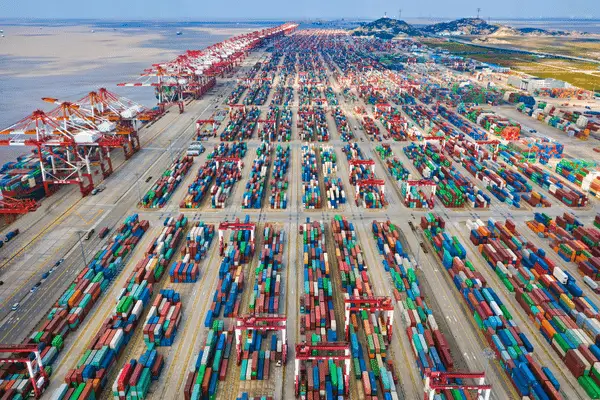
- Operated by – Shanghai International Port Company Ltd.
- Owned by – Public
- Annual Cargo Tonnage – 514 million – 2016
- Opened Year – 1842
The port became operational in 1842 as part of a treaty port; it holds the title of the largest port in China and the world. The largest port in the world title was granted to the Port of Shanghai in 2010 when it took over the port of Singapore.
The Shanghai International Port company handles the entire management process of the port of Shanghai. Here are the major highlights of the port of shanghai.
Highlights of the port of shanghai
- It has earned the title of best-connected port from UNCTAD.
- Nearby Yangshan port is considered the world’s largest automated port, which is made to handle traffic during shallow water conditions. It is connected to the main port with the Donghai bridge.
- You will also see smaller ports around the main port built to process more cargo than any other ports in china.
- It spans over 3,5000 sq kilometers.
- The port’s location makes it more unique and does an excellent job of protecting the harbor.
- It has access to all the major chain’s industrial and manufacturing zones.
#2 Port of Shenzhen
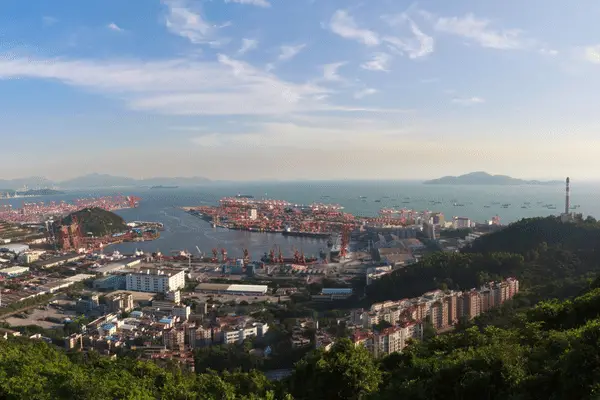
- Owned by – The Shenzhen government
- Stays in – Guangdong province
- Traffic handled – 27.7 million TEU
- Cargo tonnage – 194.9 million tons
Shenzhen is seen as the second largest port in the nation of China. The harbor surrounds it in the pearl river area. Compared to other ports, Shenzhen is an evolving port in the region. Here are the major highlights of this port:
Highlights of Port of Shenzhen
- It serves over 50 global shipping lines and is connected to over 130 interaction shipping routes.
- Annually the port of Shenzhen handles over 10,000 vessels.
- There are 140 beats in the min zone; 51 of them are dedicated to taking care of the large vessels of 10,000 DWT or more, 43 of them for 10,000 DWT vessels, nine consignee berths, 18 container berths, 23 non-production berths, and 18 of them serve as a passenger ferry berths.
- The western zone is a deep water port connected to other Chinese ports through the On See Dun waterway.
- Eastern zone homes to large cargo vessels and passenger ferries
#3 Port of Ningbo-Zhoushan
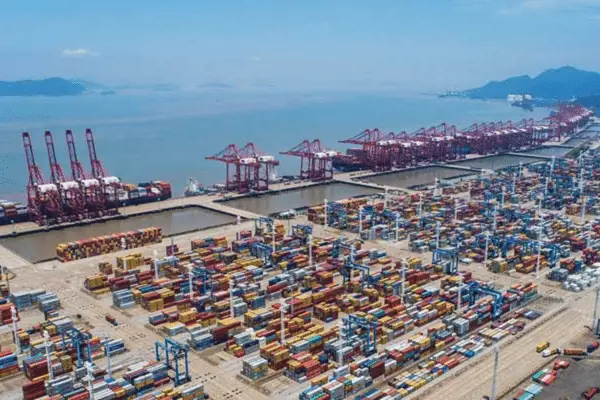
- Owned by – Ningbo Zhoushan Port Co., Ltd
- Annual Cargo Tonnage – 744 million – 2012
- Container Volume annually – 16.83 Million – 2012
- Belongs to – Zhejiang Province
If the port of shanghai takes the title of the largest port in china, the Port of Ningbo-Zhoushan is seen as the busiest port globally for cargo, shipping over one billion tons of freight annually. Here are the essential details about the port.
Highlights of Port of Ningbo-Zhoushan
- It ships over 1 billion tons of cargo every year.
- The port is connected to 560 other ports spanning 90 countries.
- The port of Ningbo-Zhoushan is home to nearly 200 berths, 40 of which process ships over 10,000 DWT.
- It has a dedicated terminal for processing crude oil of over 250,000 tons and ore bulk carriers vessels of over 200,000 tons.
- The port is also seen as one of the world’s most considerable ore handling years. The storage year here holds a capacity of 4.1 million tons with a dedicated shipping berth.
#4 Port of Guangzhou
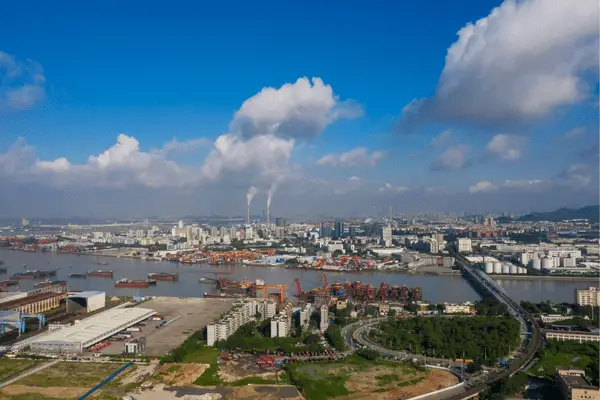
- Owned by – Guangzhou port group co. Ltd
- Container traffic – 21.9 million TEU
- Cargo Tonnage handling up to – 600 million tons
The Port of Guangzhou is one of the other busiest ports in China. It holds the title of the largest southern port in china. The Port of Guangzhou merged with the regional Huangpu seaport, making it one of China’s largest comprehensive ports. Here are some of the interesting facts about this port.
Highlights of Port of Guangzhou
- Port of Guangzhou trades with over 80 nations with 300 ports.
- The port has a well-connected rail, air, and inland waterway. By being in the rivers of Dongjiang, it is well connected to the industrial hubs surrounding the port.
- The port houses 4,500 berths with 2,400 anchorage points.
- It is home to large storage spaces, bonded warehouses, and logistics centers.
- The port deals with agricultural production, food, industrial goods, machinery oil, fertilizers, minerals, steel ore, automobile parts, and more.
In the future, we will see the port capacity extend to even higher numbers; it is predicted the port will easily handle over 100,000 tonnes through dredging activities. Work is underway to increase the passenger handling capacity.
#5 Port of Hong Kong
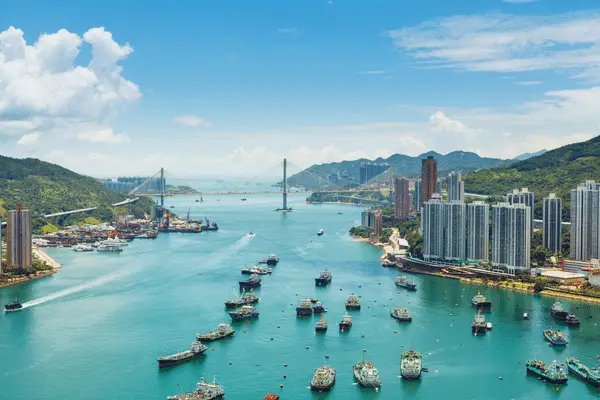
- Owned by – Government of Hong Kong
- Berths – 24
- Operated by – Hong Kong Maritime and Port Board
- Container traffic – 19.6 million
- Cargo Tonnage – 258.5 million tons
The Port of Hong Kong is located in the financial and commercial region, and the port area has expanded from the title of an ordinary fishing village to the top-of-the-line seaport in the world. All thanks to the region’s commercial aspect that improved the area’s social-economic climate.
Highlights Of Port of Hong Kong
- The port sees half-a-million vessels annually. It holds over 250 million tons of cargo and receives around 25 million passengers.
- The port is known for its lowest turnaround times, 10 hours for container vessels and 47 hours for tankers off-site.
- The Hong Kong port is also famous for its midstream operations; vessels don’t approach the port during peak or hazardous conditions.
- The regular ferry service serves over 15 million passengers.
- It sees vessels of different sizes and classes; a government dockyard is available at the site.
One of the essential details about all the ports of china, all of them share their unique code. Most ports in China have UN/LOCODE prefixed with CN – tag. CN represents the name China. The Port of Hong Kong has the HK- identification instead of CN- which is common in all the other ports in China.
Conclusion
With the ever-expanding economy of China, the ports have constantly been improving and getting better at handling more tonnage of cargo and passengers every year. China has been investing a lot of resources to make the transportation sector of the country more proficient and effective in its transportation services.
